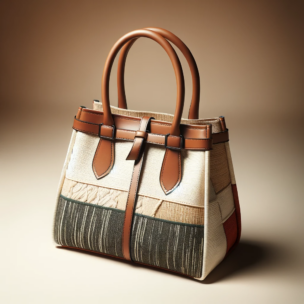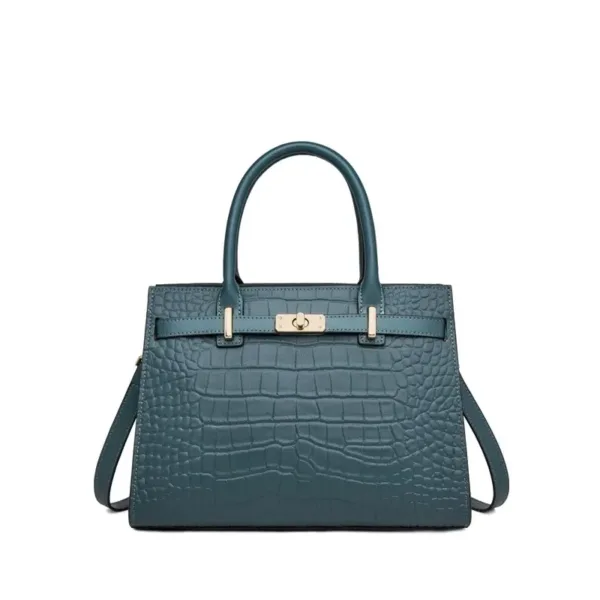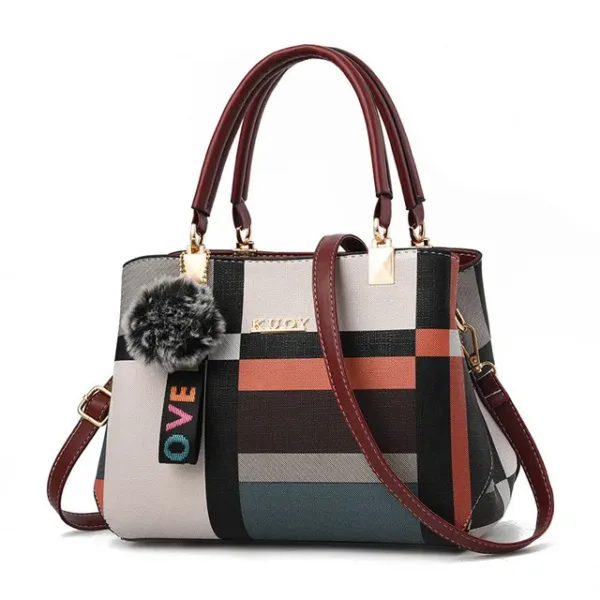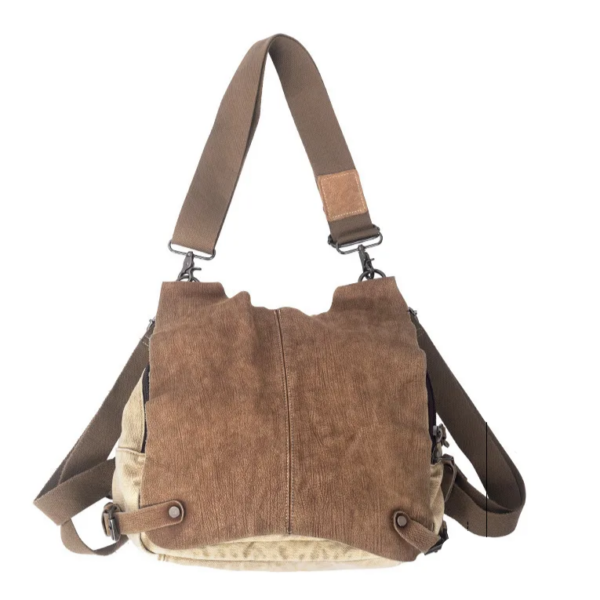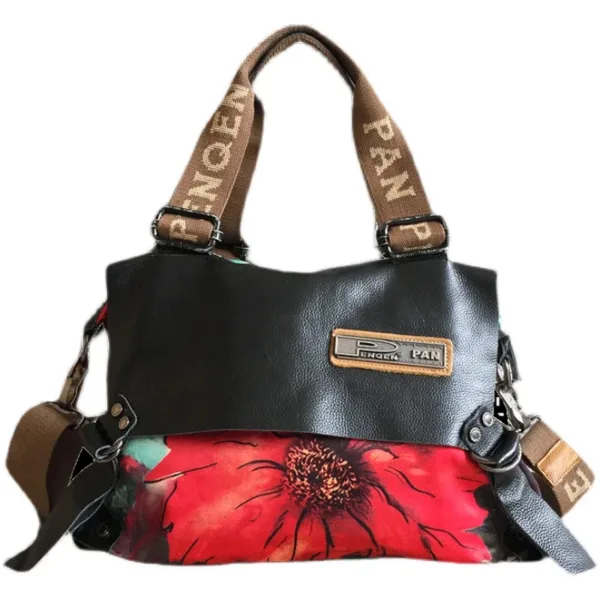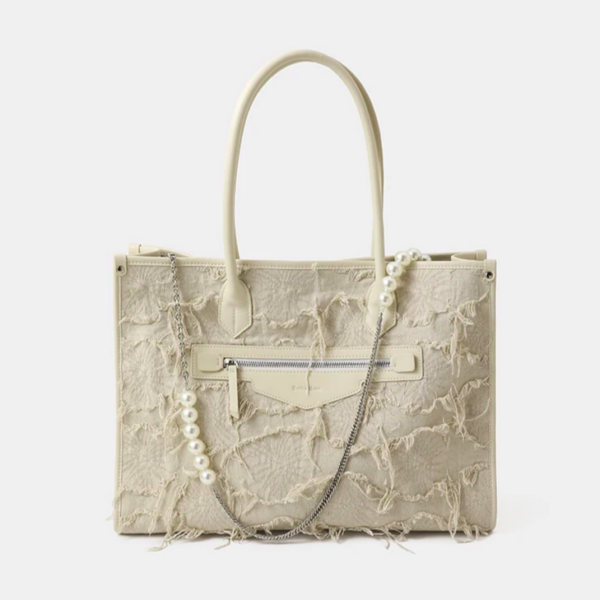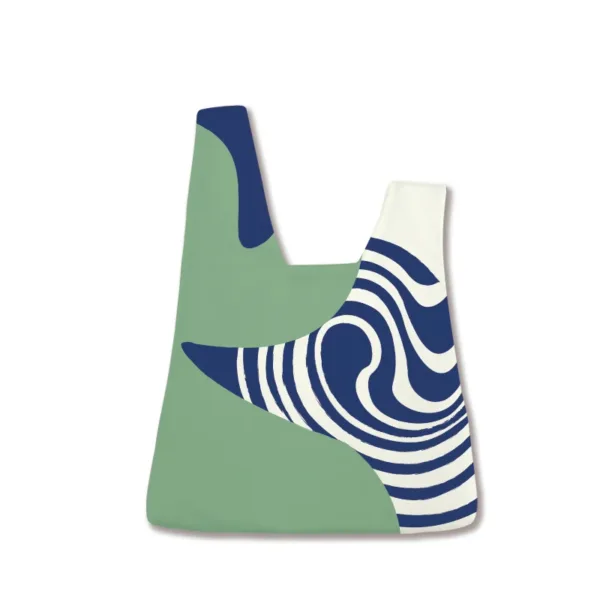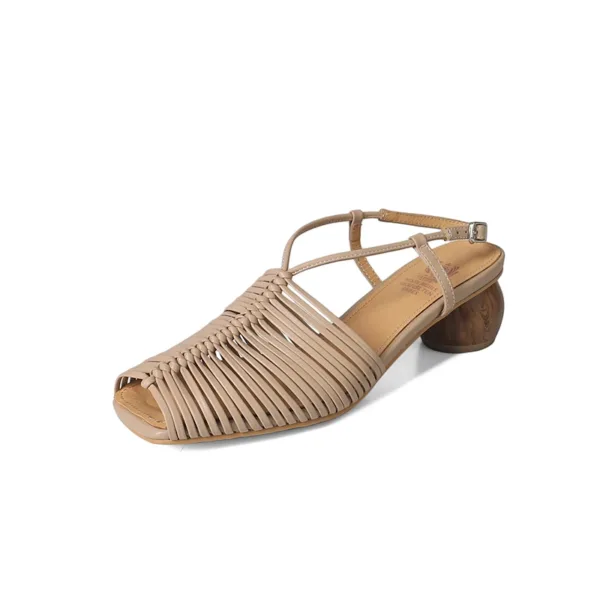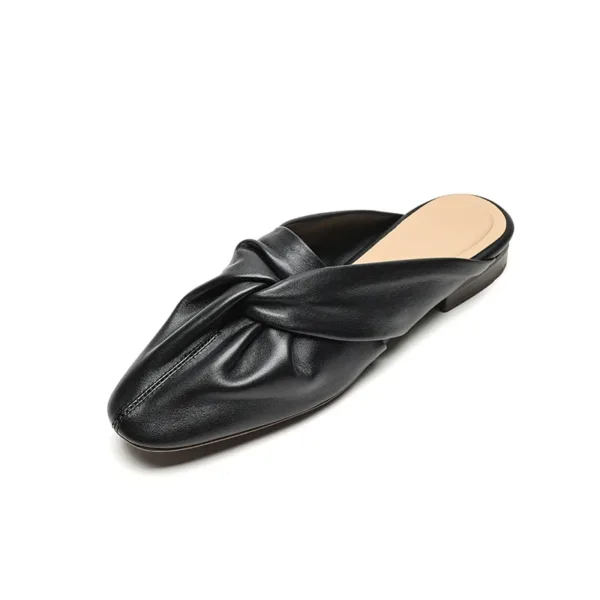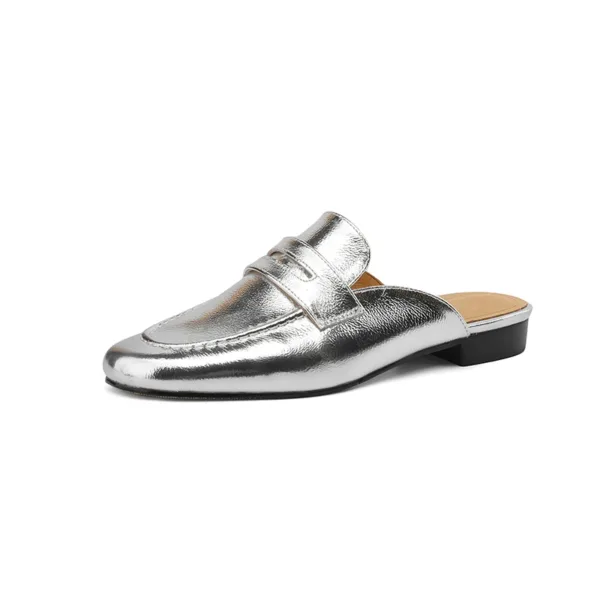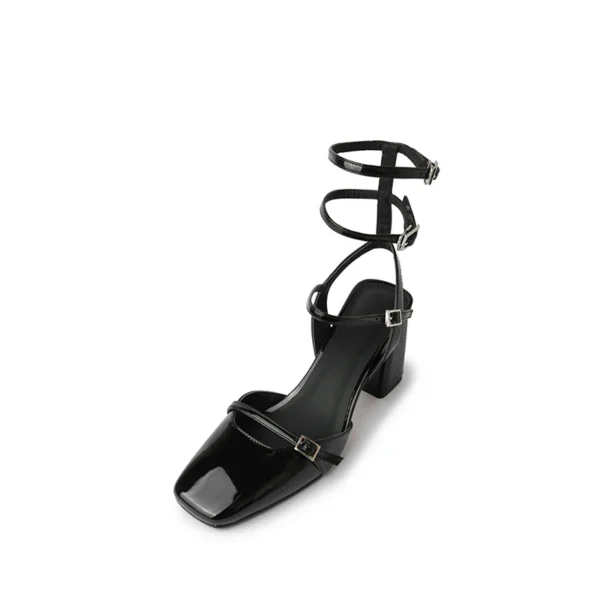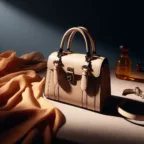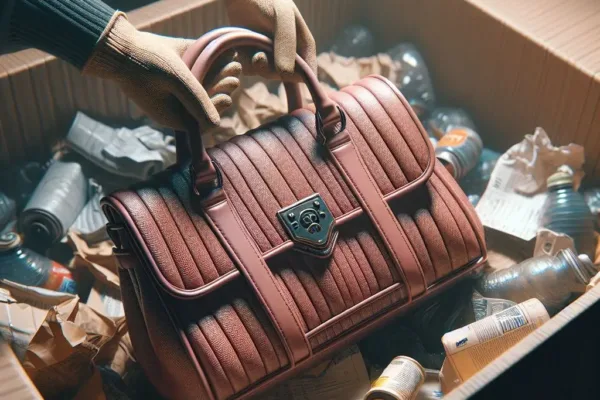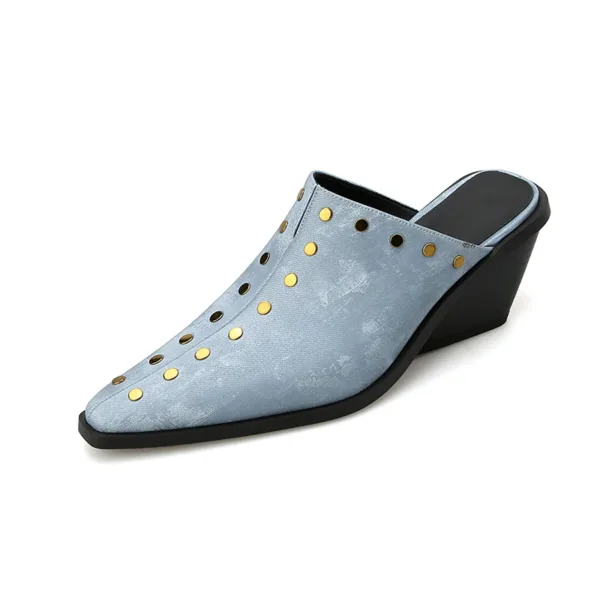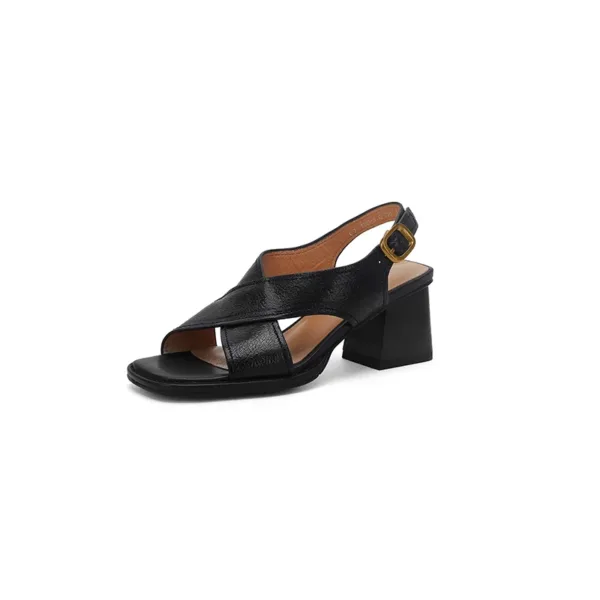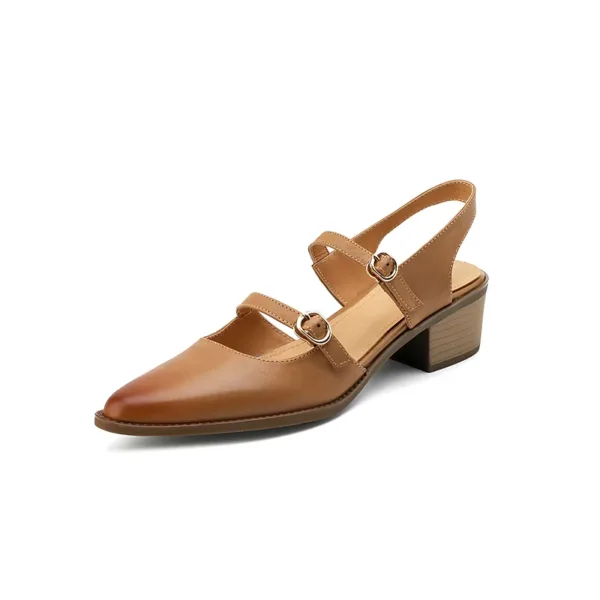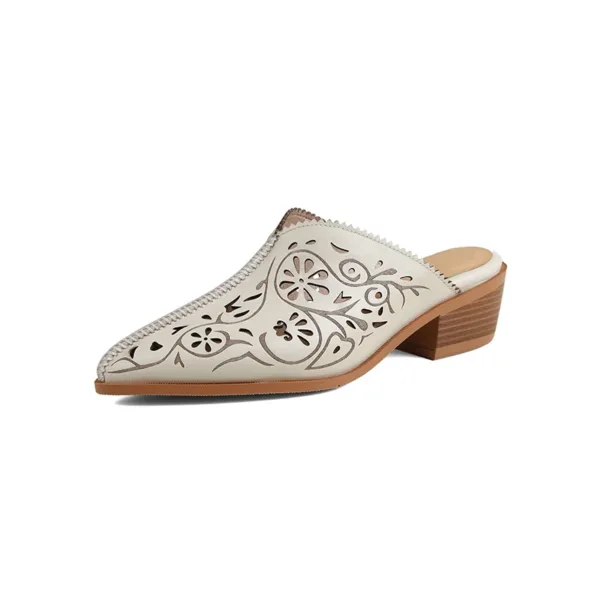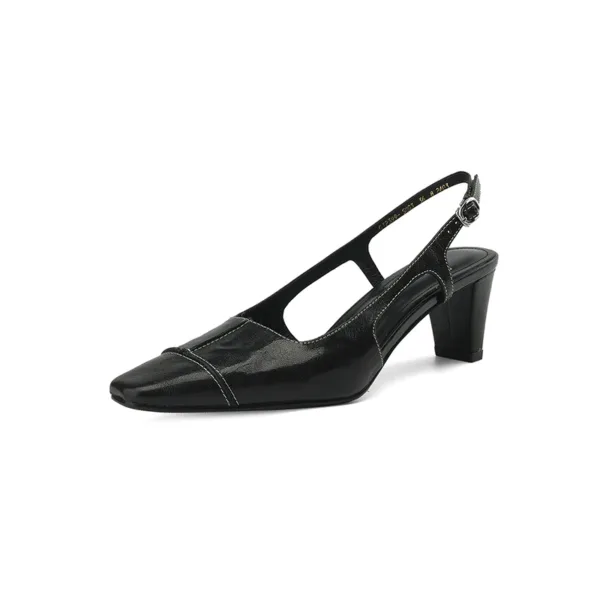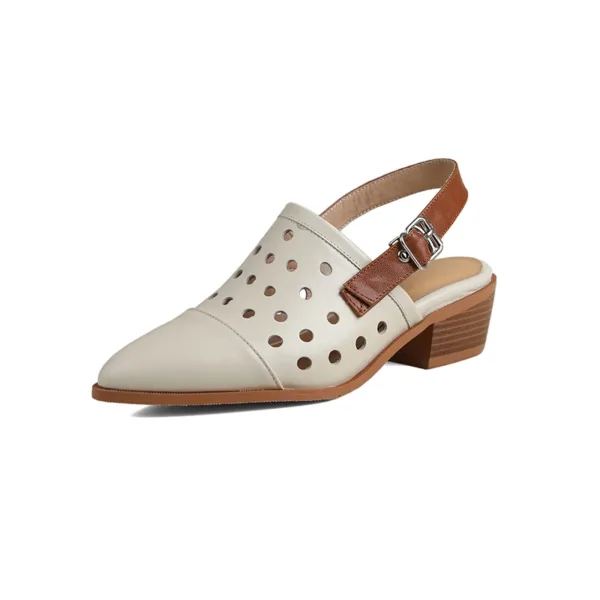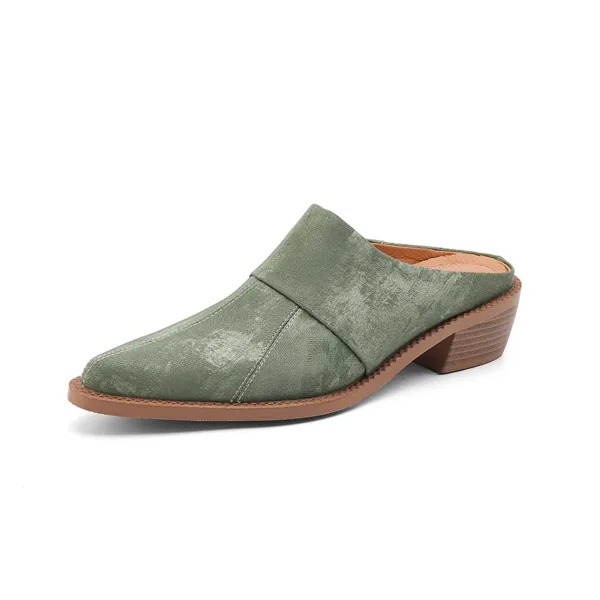TL;DR: The article delves into the ingenious and eco-conscious world of handbag material recycling within the fashion sector. It spotlights trailblazing brands such as Elvis & Kresse, Rothy’s, and Freitag, highlighting their unique approaches to sustainability. By repurposing materials like decommissioned fire hoses, plastic water bottles, and used truck tarps, these brands transform what would be waste into chic, environmentally-friendly handbags. This trend accomplishes more than just reducing environmental impact; it ignites a wave of creativity, offering distinctive and fashionable accessories. It aligns with our intention at KoKo Royale to always try and promote a sustainable future in fashion, emphasizing how style and environmental responsibility can coexist harmoniously.
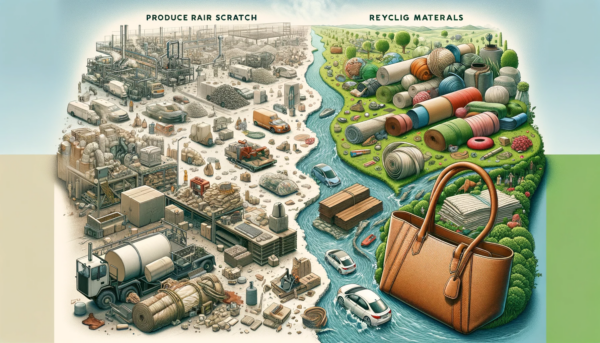
In a world where fashion is constantly evolving, the concept of sustainability has become more than just a trend; it has become a necessity. As the fashion industry grapples with its environmental impact, designers and consumers alike are seeking innovative ways to reduce waste and breathe new life into discarded materials. In this article, we delve into the fascinating world of handbag material recycling, exploring how this practice not only benefits the planet but also unlocks a world of creative possibilities. From repurposing old fabrics to transforming leather scraps into stunning accessories, join us on a journey where fashion meets sustainability, igniting a revolution that redefines the very essence of style.
Handbag Material Audit
1. Leather
- Source: Leather is primarily sourced from animal hides, typically cows.
- Environmental Impact:
- Deforestation: Raising livestock for leather often leads to deforestation for grazing land.
- Greenhouse Gas Emissions: Livestock farming produces significant methane emissions, a potent greenhouse gas.
- Water Usage: Large amounts of water are required for livestock and the leather tanning process.
- Chemical Pollution: The tanning process involves harmful chemicals that can pollute waterways.
2. Cotton and Linen (for Canvas Bags)
- Source: Cotton and linen are natural fibers derived from cotton plants and flax plants, respectively.
- Environmental Impact:
- Pesticide and Water Usage: Cotton farming is water-intensive and often relies on pesticides, which can harm ecosystems.
- Land Use: Requires significant land for cultivation.
3. Synthetic Materials (e.g., Nylon, Polyester)
- Source: Derived from petroleum products.
- Environmental Impact:
- Fossil Fuel Consumption: Relies on non-renewable resources like oil and gas.
- Greenhouse Gas Emissions: Production contributes to CO2 emissions.
- Non-Biodegradable: These materials take hundreds of years to decompose.
4. Waxed Canvas
- Source: Made from natural fibers treated with wax.
- Environmental Impact:
- Biodegradable: More environmentally friendly as it is biodegradable.
- Low-Impact Manufacturing: Generally involves less harmful processes.
5. Wool Felt
- Source: Made from sheep’s wool.
- Environmental Impact:
- Land and Water Usage: Sheep farming requires land and water.
- Chemical Treatments: Wool processing may involve chemicals.
6. Paper (for Paper Bags)
- Source: Derived from wood pulp.
- Environmental Impact:
- Deforestation: Can contribute to deforestation if not sourced from sustainable forests.
- Renewable Resource: Paper is a renewable resource if managed responsibly.
Environmental Audit Summary
- Resource Depletion: Leather and synthetic materials heavily rely on non-renewable resources or practices that can lead to resource depletion.
- Pollution: Chemicals used in tanning leather and producing synthetic materials contribute to pollution.
- Carbon Footprint: Livestock farming and synthetic material production have high carbon footprints.
- Land Use and Biodiversity: Leather and cotton production can lead to deforestation and loss of biodiversity.
- Water Usage: High water usage in leather and cotton production is a significant environmental concern.
Reviving Fashion: Handbag Material Recycling for Sustainable Style
When it comes to fashion, there is an undeniable allure in the world of handbags. These iconic accessories have the power to elevate any outfit, exuding style and sophistication. But what if we told you that there is a way to not only enhance your fashion game but also contribute to a more sustainable future? Enter handbag material recycling, a groundbreaking trend that is revolutionizing the fashion industry.
The Creative Power of Recycling
Handbag material recycling is more than just a buzzword; it is a transformative movement that allows designers and fashion enthusiasts to explore new horizons of creativity. By repurposing and reimagining materials, the possibilities become endless. From upcycled leather to recycled fabrics, these innovative techniques breathe new life into discarded materials, giving them a second chance to shine.

Imagine a handbag crafted from reclaimed denim, with its unique texture and faded hues telling a story of its previous life. Or picture a stunning clutch made from repurposed seat belts, adding an unexpected touch of edginess to your ensemble. With handbag material recycling, fashion becomes a canvas for imagination, enabling designers to create one-of-a-kind pieces that are both stylish and sustainable.
A Sustainable Fashion Revolution
Handbag material recycling is not only a creative outlet but also a powerful solution to the environmental challenges faced by the fashion industry. By diverting materials from landfills and reducing the demand for new resources, this practice significantly minimizes the carbon footprint associated with fashion production.

Consider this: producing a single handbag from scratch requires an extensive amount of raw materials, energy, and water. However, by recycling materials, we can conserve valuable resources and reduce the negative impact on our planet. This eco-conscious approach not only benefits the environment but also encourages a shift towards a more sustainable fashion industry.
Examples of Handbag Material Recycling
Exploring the world of sustainable fashion, particularly in the realm of handbag recycling, reveals some truly innovative practices:
- Transformed Leather Treasures: Brands such as Elvis & Kresse demonstrate remarkable creativity in sustainable fashion. They have specialized in repurposing decommissioned fire hoses and discarded leather scraps into luxurious handbags. Each piece is a testament to the unique history and texture of the salvaged materials, aligning with our philosophy at KoKo Royale, where we try to always prioritize environmental stewardship alongside luxury.
- Revived Fabric Elegance: Companies like Rothy’s are making significant strides in eco-friendly fashion. They are known for transforming plastic water bottles into fashionable, durable handbags. This process not only creates stylish accessories but also significantly reduces potential landfill waste, resonating with our commitment to sustainable luxury.
- Innovative Material Reclamation: Freitag has emerged as a pioneer in sustainable fashion by utilizing unconventional materials such as used truck tarps, bicycle inner tubes, and seat belts to craft their handbags. Their designs are notable for their distinctiveness, durability, and waste-reducing impact, reflecting the innovative spirit we embrace in creating our diverse handbag range.
The Future of Fashion is Sustainable
As the fashion industry continues to evolve, handbag material recycling emerges as a beacon of hope, offering a sustainable path forward. By embracing this innovative trend, we can not only reduce waste but also unlock a world of creative possibilities. So, why settle for conventional fashion when you can make a statement with a handbag that tells a story and contributes to a better future?
Recommendations for Handbag Material Recycling in Fashion

The Rise of Handbag Material Recycling
Handbag material recycling has gained significant momentum in recent years, driven by the desire to reduce waste and promote a circular economy. This innovative approach involves repurposing and reusing materials from discarded handbags, giving them a second chance to shine. By diverting these materials from landfills, fashion enthusiasts and designers alike are contributing to a more sustainable future.
Endless Creative Possibilities
The beauty of handbag material recycling lies in its ability to unlock a world of endless creative possibilities. Designers are no longer bound by the limitations of traditional materials; instead, they can explore a vast array of textures, colors, and patterns sourced from recycled handbags. From luxurious leather to vibrant fabrics, the options are truly limitless. This newfound freedom allows designers to create unique, one-of-a-kind pieces that make a bold statement while reducing the industry’s environmental footprint.
Redefining Fashion Trends
Handbag material recycling has the power to redefine fashion trends, breathing new life into classic styles and transforming them into something entirely fresh and unexpected. Imagine a vintage-inspired handbag crafted from repurposed materials, combining the elegance of the past with a modern twist. This fusion of old and new not only adds a touch of nostalgia but also showcases the industry’s commitment to sustainability.
Collaborations and Partnerships
The world of handbag material recycling has paved the way for exciting collaborations and partnerships between fashion brands, environmental organizations, and even local artisans. These collaborations foster innovation and knowledge-sharing, leading to the development of new techniques and approaches to recycling. By working together, these stakeholders can create a more sustainable fashion industry that inspires and empowers both consumers and creators.
Consumer Empowerment and Conscious Choices
Handbag material recycling empowers consumers to make conscious choices that align with their values. By opting for recycled handbags, individuals can support sustainable practices while still indulging in their love for fashion. This shift in consumer behavior not only drives demand for recycled products but also encourages brands to adopt more environmentally friendly practices throughout their supply chains.
In conclusion, handbag material recycling is revolutionizing the fashion industry, unleashing a world of creative possibilities while promoting sustainability. By repurposing and reusing materials from discarded handbags, designers can create unique, captivating pieces that redefine fashion trends. Collaborations and partnerships further drive innovation, while consumer empowerment encourages conscious choices. Together, we can revive fashion and pave the way for a more sustainable future.

FAQ
Concluding Remarks
As we conclude our exploration into the world of fashion and its sustainable evolution, one thing is abundantly clear: handbag material recycling is a game-changer that unleashes boundless creative possibilities. The fusion of innovative design and environmental consciousness has paved the way for a new era in fashion, where discarded materials are transformed into stunning accessories that tell unique stories.
By breathing new life into forgotten fabrics and materials, designers are not only reducing waste but also challenging the norms of conventional fashion. From upcycled denim to repurposed leather, these handbags embody the spirit of reinvention, inviting us to rethink our relationship with fashion and embrace a more conscious approach.
The beauty of handbag material recycling lies in its ability to transcend trends and seasons. Each piece becomes a testament to the skill and imagination of the designer, as well as a reflection of the wearer’s individuality. By embracing these sustainable creations, we become part of a movement that celebrates both style and responsibility.
Now, dear reader, we turn to you. What are your thoughts on this exciting revolution in the fashion industry? Have you ever owned a handbag made from recycled materials? If so, we’d love to hear about your experience in the comments section below. Share your favorite sustainable fashion brands or any creative ideas you have for repurposing materials. Let’s engage in a conversation that propels us towards a more sustainable and stylish future.
In this era of conscious consumerism, let us celebrate the power of fashion to transform not only our wardrobes but also our world. Together, we can redefine the boundaries of creativity and make a lasting impact on the planet we call home.







